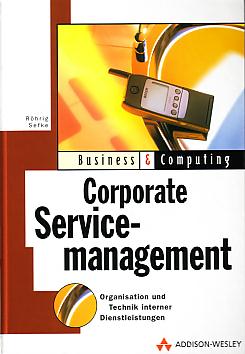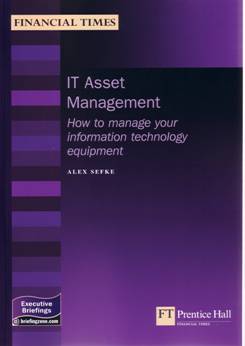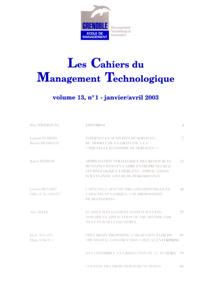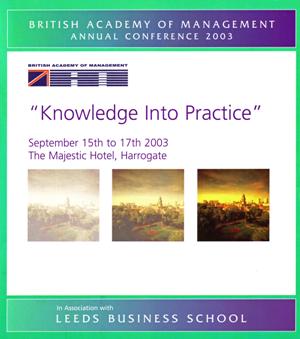
Corporate Service Management
Organisation und Technik interner Dienstleistungen
Addison Wesley, Munich, 2000
Organisations today are determined through processes and procedures, as opposed to their organisational structure. Departments and units develop customer relationships with eachother that gain importance of organisational structures and sometimes even replace these.
In striving to utilise effectively and efficiently resources, organisations concentrate on their core competencies. Areas and processes outside these core competencies are typically sourced from service providers, who are expected to have gained process excellence in these areas.
Process Driven Organisations
Organisations striving for their corporate objectives increasingly become dependent on
information technology (IT). This dependency drives the increasing demand for highly qualified IT services that support business requirements.
This book is concerned with the management of these services and the underlying customer relationships,
including the interfaces to external service providers. Based on a clarification of terminology and meaning of service management in the context of this book, organisational service tasks are discussed.
Complemented by case studies, organisational aspects are depicted, which sometimes seem to blurr during implementation projects, and in the light of the technical challenges of service management. Service culture and internal organisation are critical success factors for service centres and thus demand high attention. With this background, the book depicts components of IT service management and the technical and organisational interfaces to administrative tasks, such as asset and change management.
Tools
A number of tools are available to support service management that allow the implementation of service
management solutions, at the same time differently and comparable, with respect to processes and interfaces. Although the discussion of these tools cannot be definitive in the context of this book, criteria for evaluation and decision making are provided.
Typically, the decision for a tool that supports IT service management stands at the end of considerations for service management implementation, not at the beginning. Nevertheless, this decision is of overarching importance as this system will provide the backbone of a service centre and as such determines efficiency and effectiveness of its operation to a large extent.
Reporting
Success and performance of service management can only be determined through a thorough reporting and frequent quality audits. Continuous performance monitoring provides the basis for the analysis of services offered and customer satisfaction achieved. Following a quality circle, actions can be defined to improve performance or to support the business development for service offers. Design and automation of reporting thus should be driven by business requirement and not through technical capabilities.
Keywords: Service Management, Service Delivery, Service Support, Operational Effectiveness.

IT Asset Management
How to manage your information technology equipment
Financial Times/Prentice Hall, London, 2002
A growing demand for the integration of IT Asset Management services into organisations’ internal processes and customer facing product portfolios has been observed during the last couple of years.
In addition to aspects of Property Accounting, it is mainly
organisations’ striving to gain competitive advantage driving the integration of IT Asset Management. Through supporting services and organisational support functions IT Asset Management has a wide potential to gain and sustain competitive advantage through e.g. process excellence. Consequently, IT Asset Management is directly linked into organisational strategy.
Given this background of IT Asset Management in business and strategy, it is obvious, that a successful implementation of an IT Asset Management Programme needs to focus on the business’ requirements.
IT Asset Management Programmes
IT Asset Management Programmes have to be understood as a solution to a problem, rather than being “strategic” on its own. A set of clearly defined business requirements are necessary to map the expected functionality into a technology, which will meet the organisations needs and hence provide a high return on investment.
Concentrating on tools and technology prior to defining the organisation’s requirements is likely to lead to failure of the programme and to not achieving the expected return of investment and competitive advantage. IT Asset Management potentially impacts a number of financial aspects, directly or indirectly.
IT Asset Management Services Model
Maintaining a holistic approach towards IT Asset Management, a model of five key components, Inventory Management, Configuration Management, Change Management, Order Processing, Contract Management can be applied.
Besides providing a clarified terminology, the definition of each of the components allows a homogeneous organisational understanding of relations, process integration and functionality. An outline of service deliverables for each of the key components allows to precisely describing an organisation’s requirements for IT Asset Management, also reflecting the dependencies between deliverables.
Implementation
The implementation of IT Asset Management is ideally an iterative process, which will allow to gain benefits in the early stages of the project in order to minimise the initial negative impact on cash flow through necessary investments. Nevertheless, a comprehensive project plan is required, which offers an overview of the entire programme implementation and also covers the hand over of IT Asset Management services into operations.
Keywords: IT Asset Management, ITAM, IT Outsourcing, IS Capabilities, Competitive Advantage.

IT Asset Management System Success
Toward an Application of the DeLone and McLean IS Success Model, Les Cahiers du Management Technologique, Grenoble, 2003
The maturity of an IT asset management programme is determined by the extend to which it supports life cycle management in general and service management in particular. Organisational processes determine the information
flow to and from an IT asset management system.
More than a decade ago DeLone and McLean introduced their model for measurement of information system success. This paper points towards an application of this model comprising of six dimensions and attempts to further determine criteria to measure IT asset management systems’ success against. These dimensions and suggested criteria are shown in the ITAM Success Metrics, adopted from DeLone and McLean’s E-commerce Success Metrics.
Keywords: IT Asset Management, Management Information Systems (MIS), IT Outsourcing, IS Success, Maturity, Operational Effectiveness.

IT Asset Management
A Services Model and Approach
BAM Annual Conference, Harrogate, 2003
A growing demand for the integration of IT asset management services into organisations’ internal processes and customer facing product portfolios has been observed during the last couple of years. In addition to aspects of property accounting, it is mainly organisations’ striving to gain competitive advantage, which is driving the integration of IT asset management.
This paper reviews relevant literature and develops a holistic approach toward IT asset management.
Keywords: IT Asset Management, IS Capabilities, Competitive Advantage.

IT Asset Management, IT Outsourcing and Operational Effectiveness
The Development of a Model for IT Asset Management
Doctoral Thesis, Newcastle University Business School, 2006
IT Outsourcing
Due to an increased emphasis on IT enabled capabilities, organisations have been found to be at a critical stage in the management of IT resources. Challenges in IT management exist in three areas:
- Strategic alignment of IT with business strategy
- Management and facilitation of distributed IT infrastructures
- Maintenance and support of these IT infrastructures.
The understanding that information, rather than information systems, contribute to gaining competitive advantage has increasingly positioned IT as commodity services. Focusing on their core competencies, while buying
non-core services from external markets, organisations increasingly have looked at IT service providers to fulfil their IT
requirements.
Consequently IT outsourcing emerged as a key method of managing aspects of IT. From as early as 1963, when EDS provided data processing services for customers such as Frito-Lay and Blue Cross & Blue Shield, this practice has
created a global IT outsourcing industry.
Competitive Advantage
Much has been written about the use of IT in organisations and its relation to gains in competitive advantage. Information systems have been described as competitive weapons and IT has been expected to change not only the way organisations compete against each other, but also the competitive landscape they operate in.
In the 1980s, an economic imperative for the use of information technology was found that was associated with then unstable economic conditions. Organisations, inspired by success stories, sought competitive advantage from investments in IT, while at the same time experiencing an under-utilisation of IT as a problem for IT systems managers and business
managers.
Here, a lack of communication between IT and the business, resistance to change, inability to measure gained benefits and even senior management’s ignorance have been blamed to have overlooked opportunities to gain competitive advantage. Although a relationship between the use of IT in organisations and achievements in competitive advantage is evident, apparently competitive advantage does not stem from the investment in IT as such.
Rather, it has been argued that the management of these resources allowed organisations to gain sustainable competitive advantage. Prior empirical research showed expectations and objectives of the management of IT as a resource evolving around key areas. These areas included managing the flexibility of IT infrastructures that was gained through decentralisation and end-user computing on one hand, and maintaining effectiveness and productivity in IT infrastructures supporting business processes on the other.
IT Asset Management
The use of IT to support or enable organisational processes has not only become current practice, but also ‘strategic’. Following years of constantly increasing IT budgets, organisations expect returns on investment in IT similar to other investments and they focus on the capabilities enabled through or based on IT.
This approach to IT has resulted in a number of initiatives including reinforced IT resource management, also referred to as ‘IT asset management’. The subject of IT asset management has been observed as an area of focus - and sometimes of concern - in IT management during the last couple of years.
Although IT asset management is frequently referred to in the context of IT and IT service management, practitioners in the IT outsourcing industry do not seem to share a common understanding, terminology and theory. As a key contribution, this work undertook a review of literature related to IT asset management and developed a descriptive model for its constituents.
The research work focused on organisations within the IT outsourcing industry and was subsequently extended to organisations providing consultancy and technology services with respect to IT asset management to this industry. Based on the findings from research, this work presents a model for IT asset management in the context of IT outsourcing.
With this key contribution, finally the relationship between the management of IT resources, that is IT asset management, and IT outsourcing providers achieving operational effectiveness that contributes to competitive advantage is conceptualised.

Keywords: IT Asset Management, Management Information Systems (MIS), IT Outsourcing, IS Capabilities, Competitive Advantage, Operational Effectiveness.